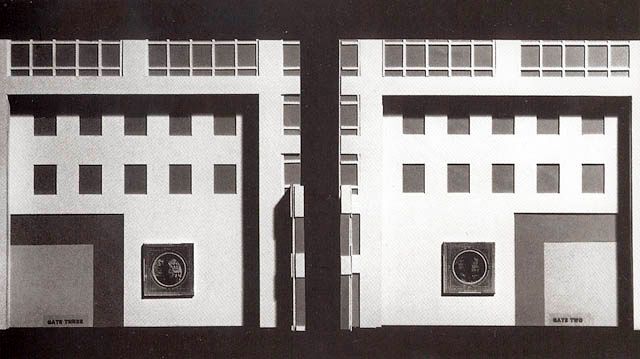Dara Birnbaum
:
Videoinstallation in the Government District St.Pölten
Back
Information
The two-stage competition provided the background to the artistic intervention in St. Pölten, for which seven artworks by Austrian artists were recommended for realisation. These projects are by Josef Danner, Bruno Gironcoli, Richard Hoeck, Hans Kupelwieser, Christoph Steffner, Thomas Stimm and Heimo Zobernig. Five commissions for interiors were awarded directly, to Gunter Damisch, Franz Graf, Brigitte Kowanz, Eva Schlegel and Walter Vopava. The winning project in a separate competition for the design of the chapel (1995) is by Arnulf Rainer. Additional existing artworks by Franz Xaver Ölzant, Oskar Putz and Ruth Schnell are also to be found in the Regierungsviertel. Works by Dara Birnbaum and Michelangelo Pistoletto, also selected by the first jury, are not realized.
'Four Gates' ist one of the two works that was selected by the jury from the international projects submitted. Unfortunately it could not be implemented until now. Since it is one of the most impotant works for St. Pölten a realization would certainly be desirable. In the catalogue of her exhibition at the Kunsthalle Wien in 1995, the artist describes her work as follows: "The point of departure for these considerations is the role of the city as a collective memory (A. Rossi). The four video installations rendering the change of identificational signs in temporal and spatial overlappings create for gates to the collective memory of the future capital city.
Four historical periods are represented by the four gates. Noricum (Roman period); Habsburg Empire (early modern period); Danube Monarchy (19th century); Austrian Republic (20th century). Behind a glass sheet bearing the map of the period, there is a video screen that can be activated by motion detectors. It indicates the constant change of borders, overlapped by illlustrations of uniformed soldiers from the period, acting as identity symbols."
(Dara Birnbaum)

